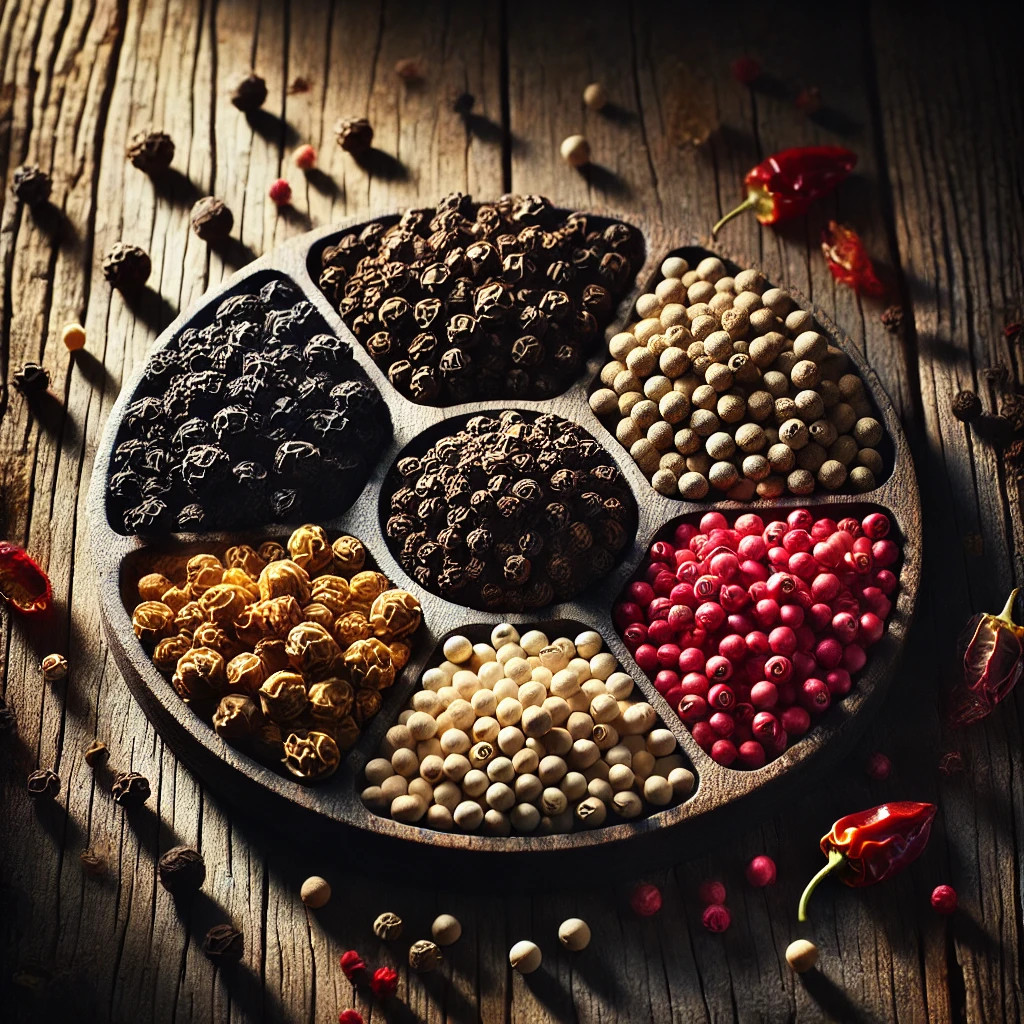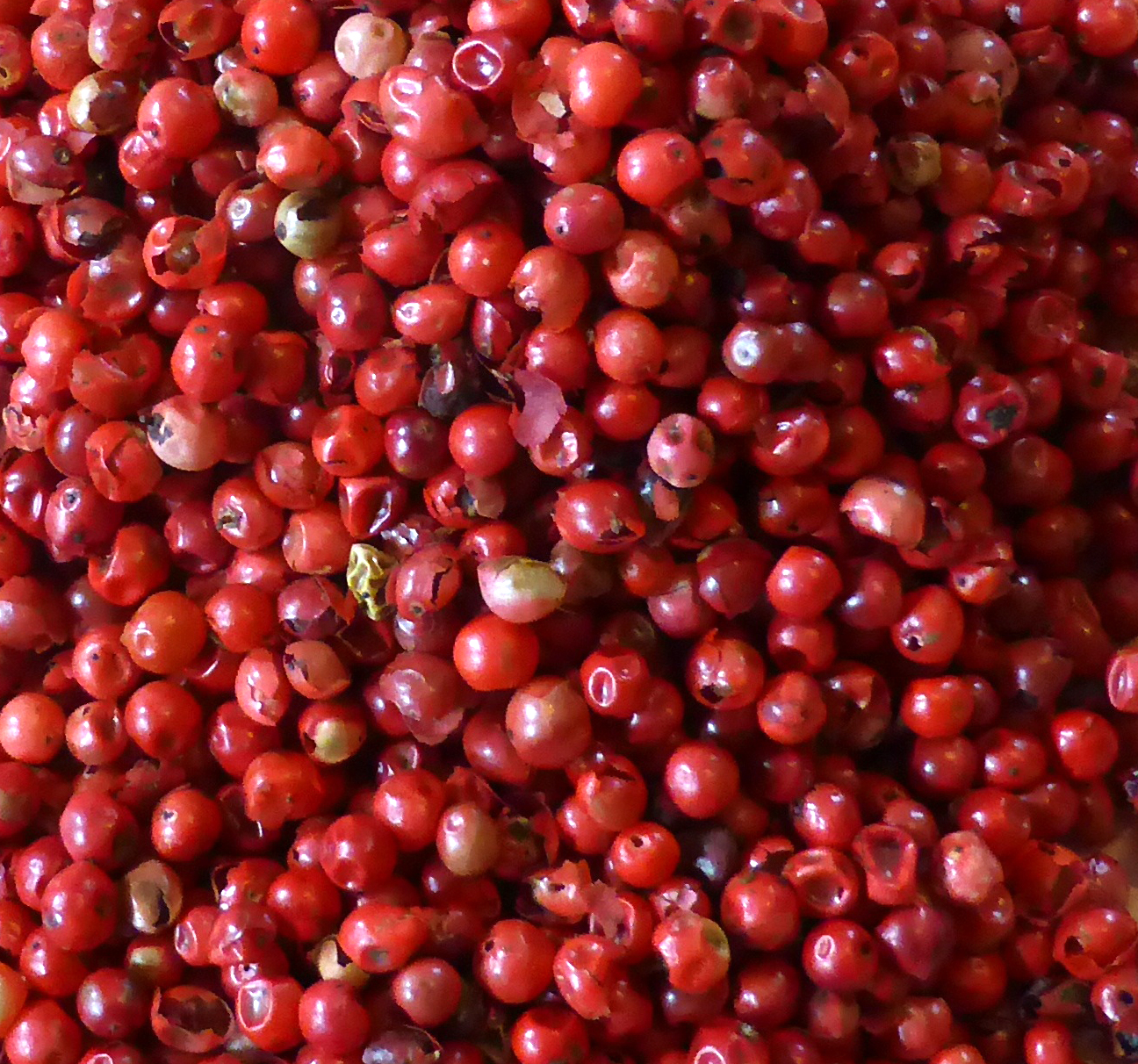
Let’s embark on a sensory journey through the world of pepper, an ancient and treasured spice that has inspired trade, discovery, and culinary ingenuity for centuries. Once hailed as “black gold” on trade routes spanning from India to Europe, pepper has long been esteemed in kitchens worldwide, with its different varieties each adding a unique touch to the table. In this exploration, we’ll dive into three popular types: black, white, and pink peppercorns, each with its own story, origin, and culinary charm.
Understanding True Peppercorns: Black and White
True peppercorns come from Piper nigrum, a vine indigenous to India. Despite sharing a common origin, black and white peppercorns develop distinct flavour profiles based on how they’re processed and harvested.
Black Pepper: The familiar, versatile black peppercorn is picked when the berry is still green and unripe. These berries are then cooked and dried, which causes the skin to wrinkle and darken, giving black peppercorns their classic appearance and bold, spicy flavour. This versatile spice packs floral undertones and intense heat, making it a staple in robust dishes like marinades, grilled meats, and hearty sauces.
White Pepper: Black pepper’s refined cousin, white pepper, comes from fully ripened berries. After harvest, the outer skin is removed through a fermentation process, revealing a smooth seed beneath. White pepper offers a subtler, earthy aroma with warmth and complexity, making it perfect for lighter dishes where a gentler pepper presence is desired. It shines in creamy sauces, delicate soups, and stir-fries, especially in French, Chinese, and Thai cuisines.
The Exotic Pink Peppercorn: A Sweet Twist
Although not a true peppercorn, pink peppercorns—derived from Brazilian and Peruvian pepper trees—bring an exotic flair with their mild heat and fruity sweetness. Ideal for adding a touch of playfulness to buttery sauces, seafood, or salads, pink peppercorns are equally delightful when paired with desserts, especially chocolate. However, a word of caution: pink peppercorns can cause allergic reactions in some individuals, and the trees are toxic to certain animals. Always ensure your source is safe and reputable when incorporating them into your dishes.
The Art of Freshness
For the richest flavours, opt for whole peppercorns and grind them freshly. Grinding releases the pepper’s essential oils, offering a depth that pre-ground pepper simply can’t match. While convenient, pre-ground pepper starts losing its potency within months, whereas whole peppercorns retain their full flavour for over a year. Using freshly ground pepper can be the difference between a merely seasoned dish and a vibrant, aromatic experience.
Culinary Inspiration: Bringing Out the Best in Each Peppercorn
White Pepper: Best for dishes requiring subtlety, white pepper enhances without overwhelming. Try it in béchamel, velouté, or light soups for a delicate, earthy flavour.
Black Pepper: Embrace black pepper’s intensity by using it in marinades, salad dressings, and roasted vegetables. A classic marinade of olive oil, sea salt, and freshly cracked black pepper elevates even the simplest ingredients.

Pink Peppercorns: Add a unique, fruity twist by crushing pink peppercorns over seafood, salads, or even chocolate desserts. The hint of sweetness creates a delightful contrast in sweet or mild dishes.
More Than a Spice: Pepper as a Culinary Art Form
Whether black, white, or pink, each peppercorn type offers a unique personality that can elevate a dish from good to unforgettable. Let your culinary imagination explore the diverse world of peppercorns to craft new flavour profiles in your kitchen. Pepper isn’t merely a seasoning—it’s a tool for adding balance, depth, and artistry to every meal. So go forth, fellow flavour explorers, and let pepper inspire your next masterpiece!

